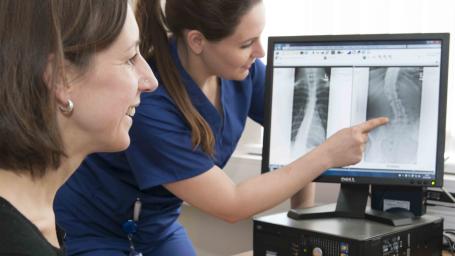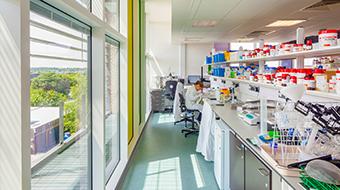Patient and Carer Partner Profiles

Anela Wood
Patient and Carer Partner
My name is Anela and I have been involved with the hospital as a Patient Partner for over a year. I became involved through the Bristol Sight Loss Council and the work being done to help improve services for those with visual impairment. Through this work I linked into the Patient Partnership and was keen to be involved as I wanted to work more broadly with staff and patients. I thought it was a good way to feed into services from my personal experience.
I have come from a background of lots of different things including paid work and volunteering, fundraising and event planning for all ages from children to adults. Being blind myself I can bring my own personal experience to the work I do. I also studied English at university and find that this helps me with the role of Patient Partner.
The work I am involved in centres around raising awareness for people with visual impairment in the hospital. This includes being involved in Digital Patient work, delivering sight loss awareness training to staff, and doing a patient story for Board. I also attend the Patient Partnership Group, Patient Experience Group and Carers Strategy Group.
I really enjoy the role, it’s really nice to work with an organisation who want to work collaboratively to make services better for those with visual impairment and sight loss. With lots in the pipeline I am excited to see how things will evolve. NBT are leading the way for other hospitals.

Eddie Strong
Patient and Carer Partner
My name is Eddie Strong, and I have been a member of the Patient Partnership Group for four years. My first connection with the hospital was eight years ago when I became a member of the newly formed Movemaker Volunteer Team when the new hospital opened.
I do not come from a medical background having worked as a Project Manager in the aviation and naval industries. I do, however, have 20 years’ experience as a Chair Magistrate covering all aspects of law. In this role I received extensive training with emphasis on understanding, fairness and encouraging logical thinking. These attributes have proved invaluable in the positions I currently hold on numerous hospital committees such as Doctor Revalidation, Resuscitation, Research, Falls Academy and Nocturia. I am also on the Sustainable Development Steering Group. I get a great deal of satisfaction by being a representative on these panels and feel, in a small way I am making a valuable contribution in these groups adding to the success of this amazing hospital. My aim, therefore, is to continue in these roles for the foreseeable future.
In my spare time I am a member of the Magistrates Association and enjoy being part of a vintage motorcycle club.

Amanda Threlfall
Patient and Carer Partner
My name is Amanda Threlfall and I am a new member of the Patient Partnership Group. I am a full-time caregiver (unpaid carer) for my husband.
Both myself and my husband have used the NHS many times, and always appreciate the care provided, and I was glad to be able to join the group as a voluntary member. Sometimes as patients and carers we can see things from a different perspective, little things that can make a big difference and this group allows a constructive dialogue. I think this is so important as we all know the NHS is under immense pressure, now more than ever, and if we as patients want the NHS to be there for us, to be in a better position and the staff that care for us at the time when we are most vulnerable we need to be there for them too.
Both my husband and I spent pretty much all our working lives in the pharmaceutical industry and I have been so grateful to keep using my skills from my time at work to help others, and to have the opportunity to do so. I’m just starting to find my feet and have joined a couple of groups.
There are many ways to be involved, and not all need to be lengthy or long-term commitments. I would encourage anyone to give it a go, and I think we should all feel like our voice matters equally no matter of our backgrounds. For me as a carer this gives me a sense of purpose, and that even though my life is limited as my husband is housebound that I can still help make a difference. At times this feels selfish as I am not actively caring, but keeping that part of me nourished helps me have the strength to keep caring. We all have a different story to tell and its can be incredibly powerful to hear other experiences and how we can all work together for a kinder and better world.

Gordon Halford
Patient and Carer Partner
My name is Gordon Halford. I am the Deputy Chair of the Patient Partnership.
Some time ago I had a heart attack and cardiac arrest. Following excellent treatment at Southmead Hospital I sought some way of contributing to the work of the NHS in my area. I discovered there was a group called at that time the Patient Panel now Patient partnership. I applied to join eleven years ago, was interviewed and joined the group. In the years since then I have enjoyed involvement in the activities of the group.
All of us have something to offer as support to the hospital and representing the interests of the patient.
As a Chartered Engineer I sat on panels assessing new equipment for installation in the new hospital at Southmead. In addition to the Patient Partnership Group meetings I sit or have sat on a number of committees including medical speciality groups, complaint response reviews, quality committee, patient experience group, appraisal of research projects, falls committee, clinical policy, audits and other interesting activities like hospital document reviews.
As other domestic commitments have increased I have been able to scale down my involvement in certain activities but still get satisfaction from contributing in several interesting groups.

Sarah Cox
Patient and Carer Partner
I am Sarah Cox, am a Mum to a 12 year old, a full time Carer for my Grandfather, and I have been a member of the Patient Partnership Group for nearly a year. I have Systemic Sclerosis and am a patient under many services at Southmead, including Rheumatology, Plastic Surgery, Respiratory and Cardiology. To date I have undergone 61 operations, the majority of which have been the amputations of my fingers and toes.
I am a proud patient of North Bristol NHS Trust and have a vested interest in improving the services and running of the hospital. I enjoy being part of the PPG because it allows me to voice and share my experiences with people who can help to open discussions that will implement change for better outcomes. I get a lot of satisfaction from feeling listened to and involved in the changes that are made and implemented. It’s wonderful to be in the hospital and see things taking place that I helped to shape and develop. Being part of the PPG triggered a deeper interest in patient care and I enrolled on a Health and Social Care degree. Much of my studies enrich my experience and knowledge of Healthcare and this underpins my part within the PPG.







